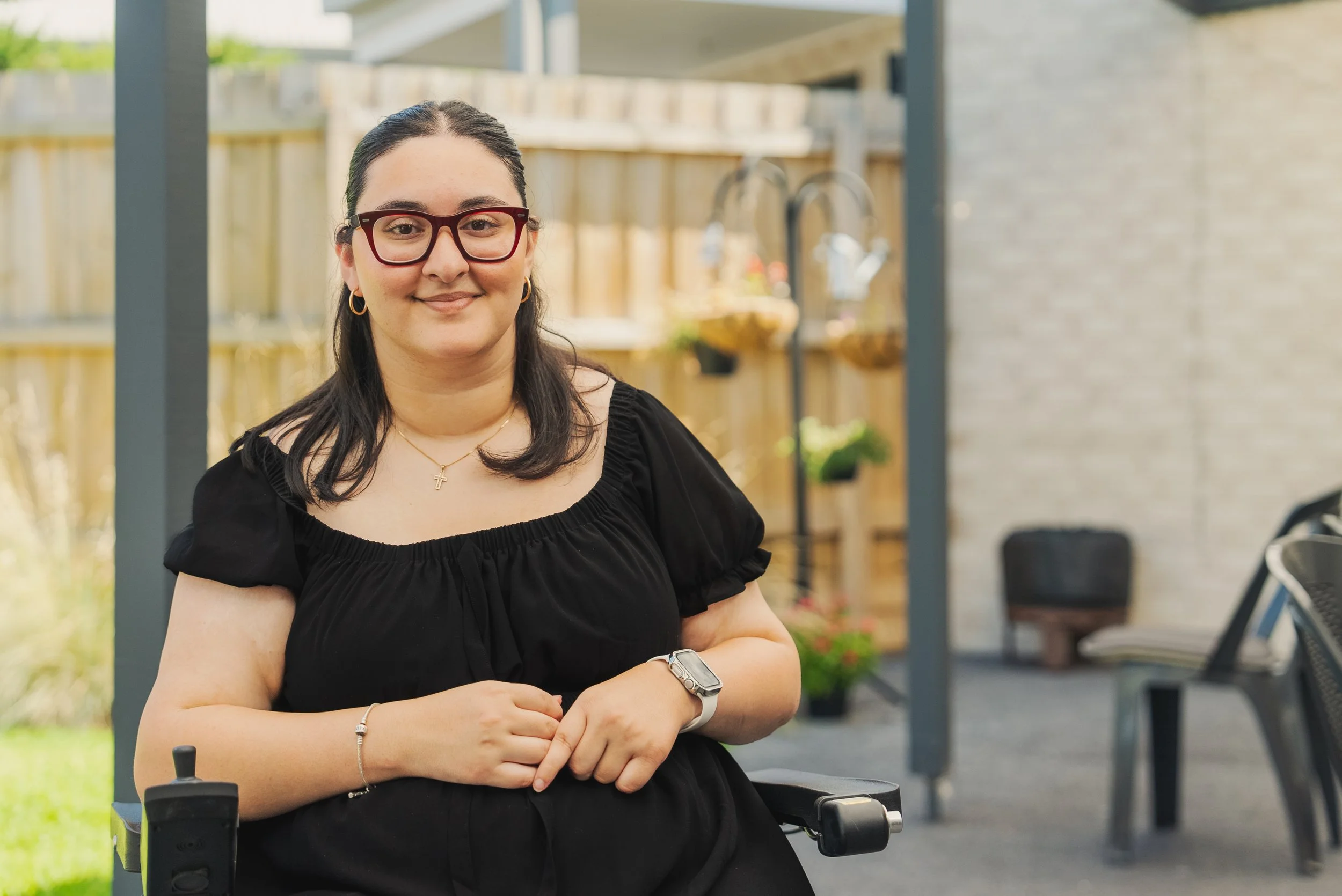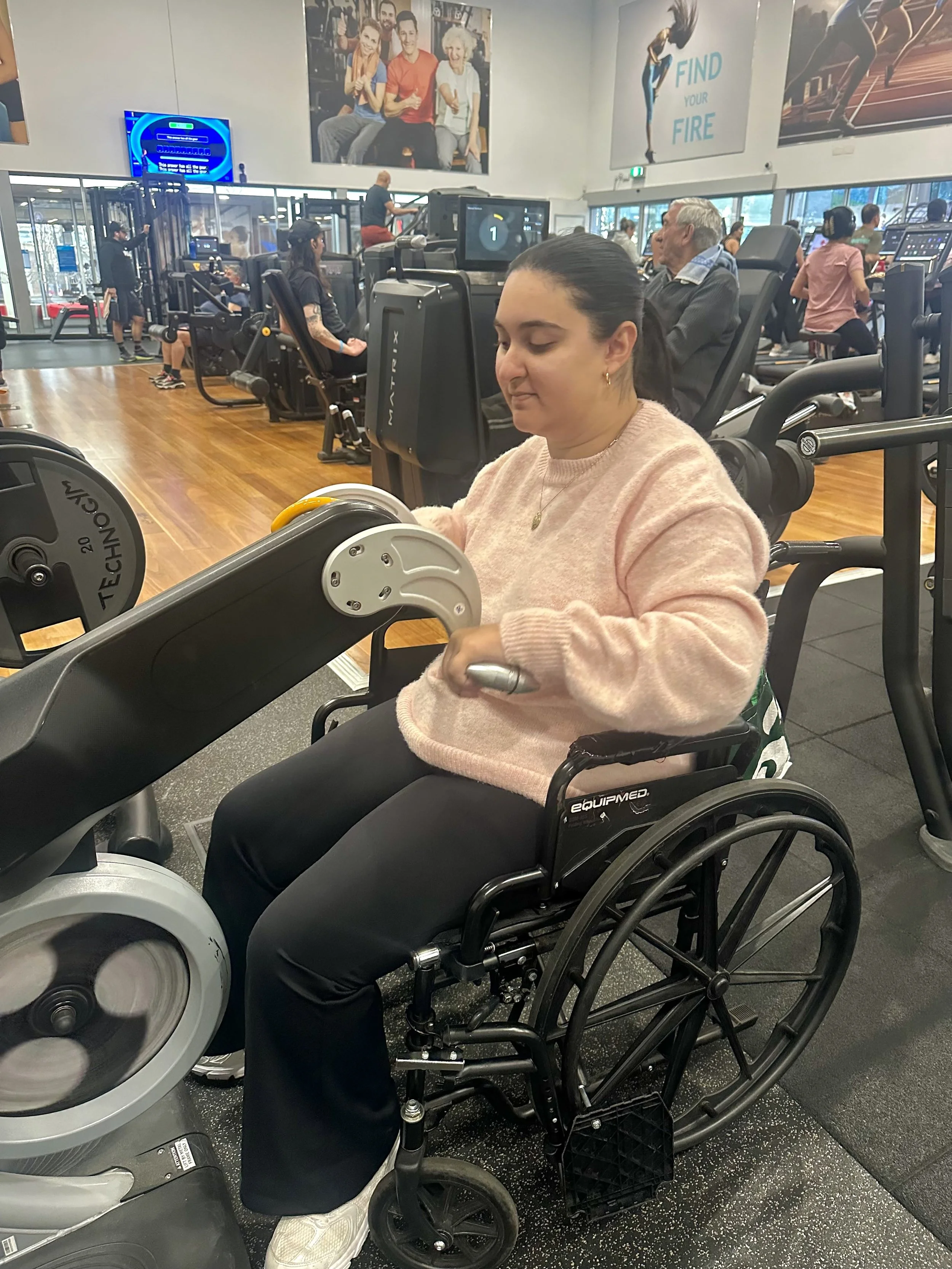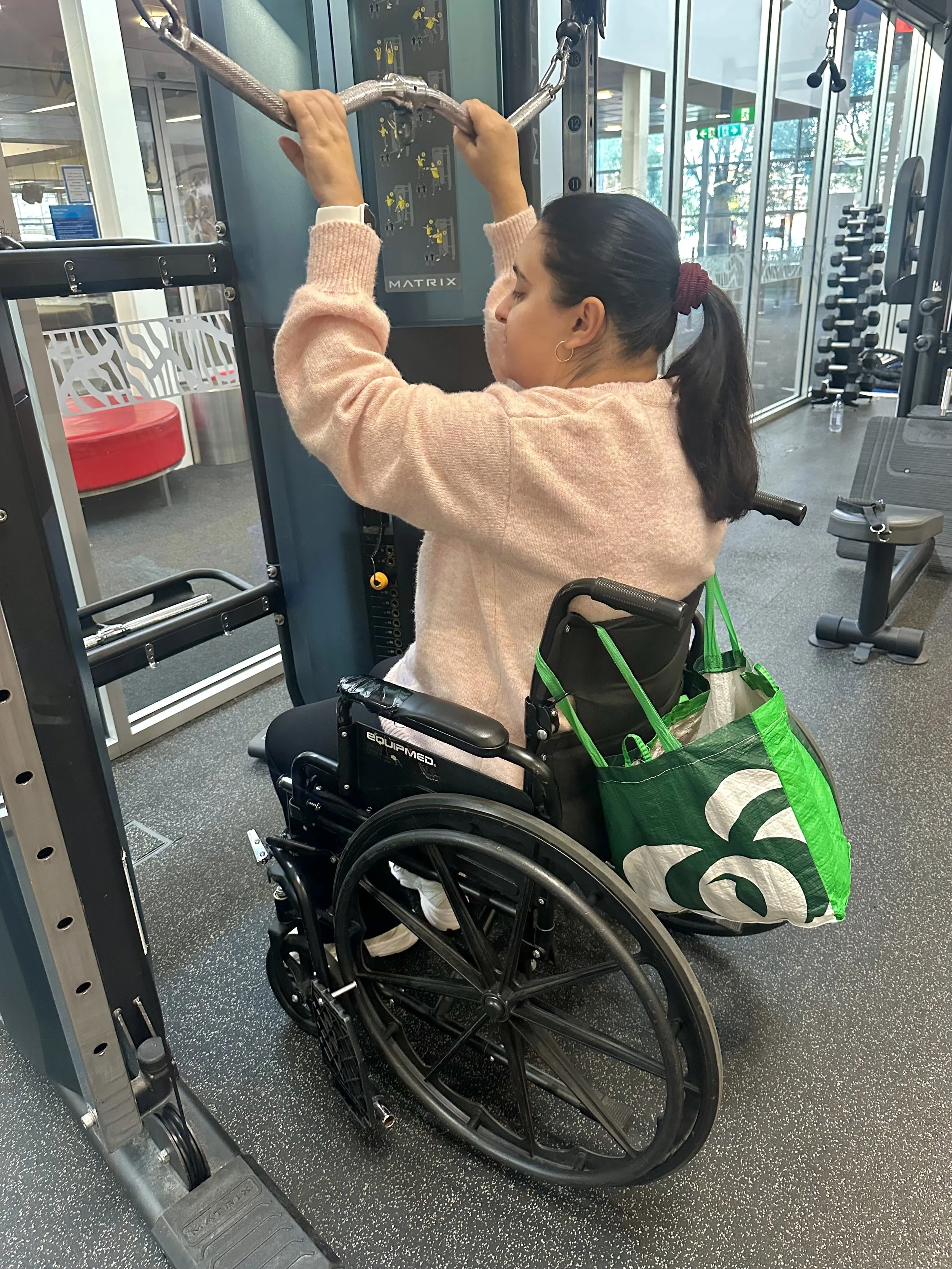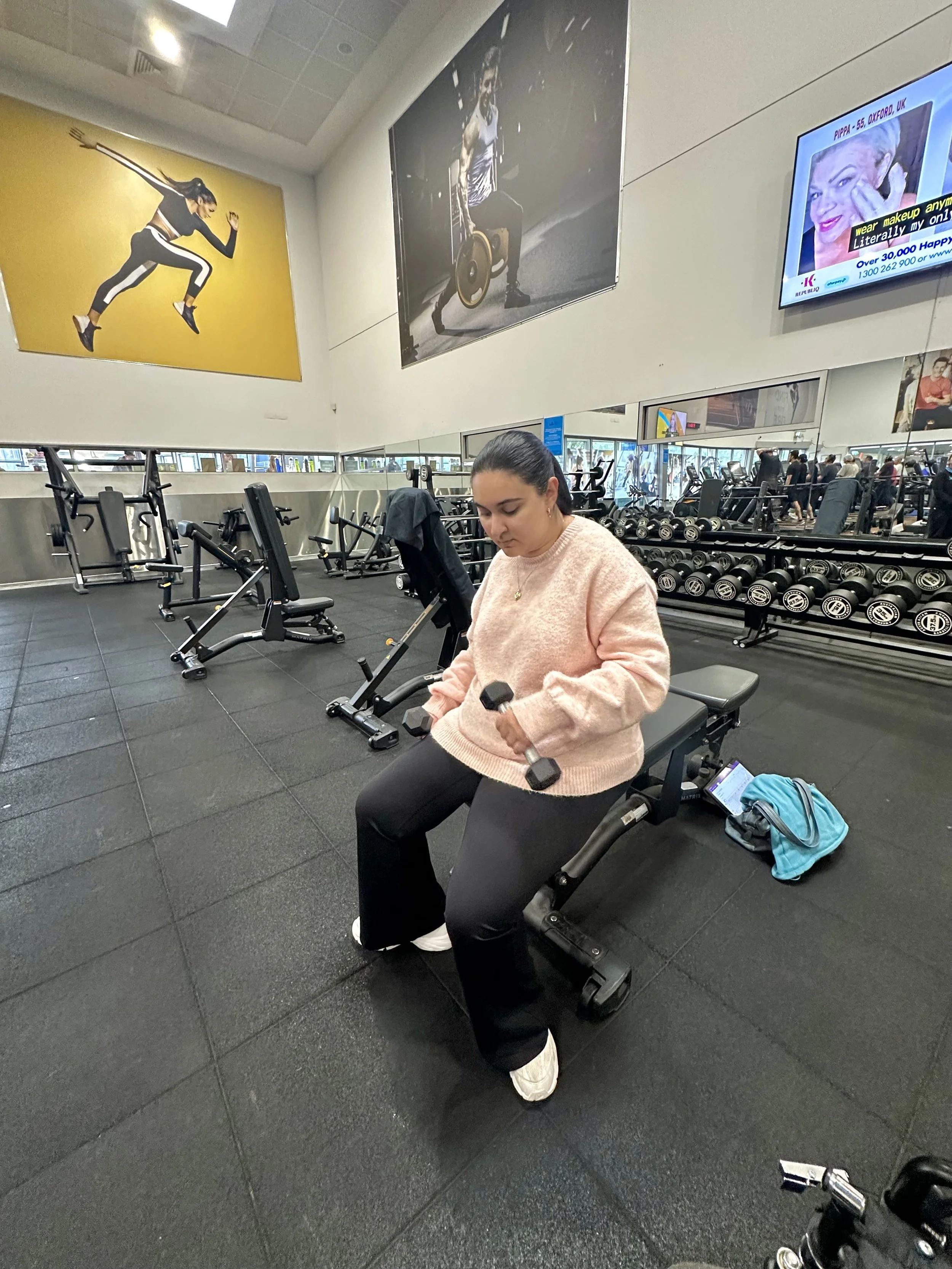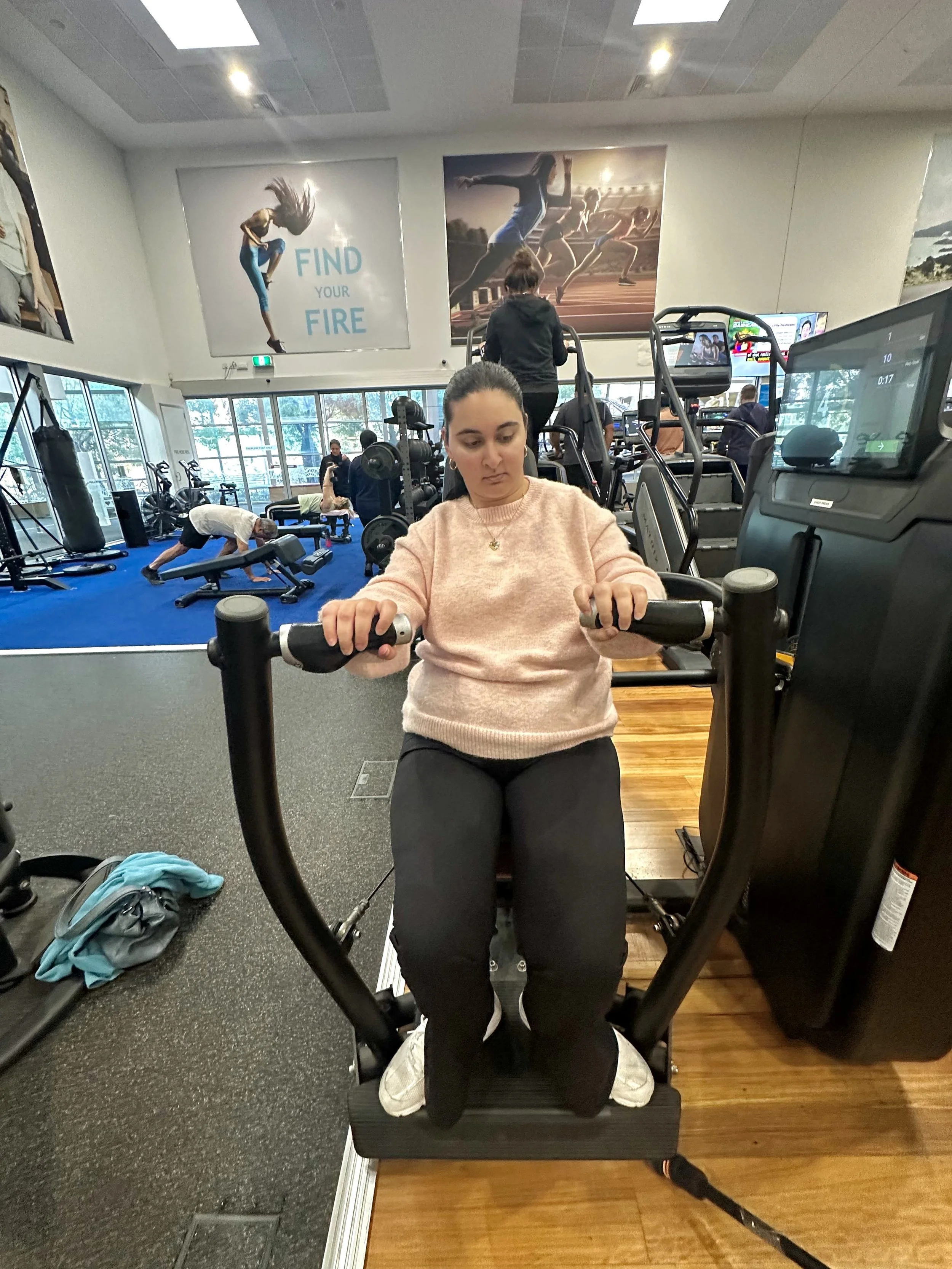
Community gym exercise
On this page, Michaela shares her story about exercising in the gym, and being supported by her therapy team.
Community gyms are a common place to exercise.
They are also one of the exercise settings that has the most research for adults with cerebral palsy.
There are many ways that adults with CP have made gym exercise work for them.
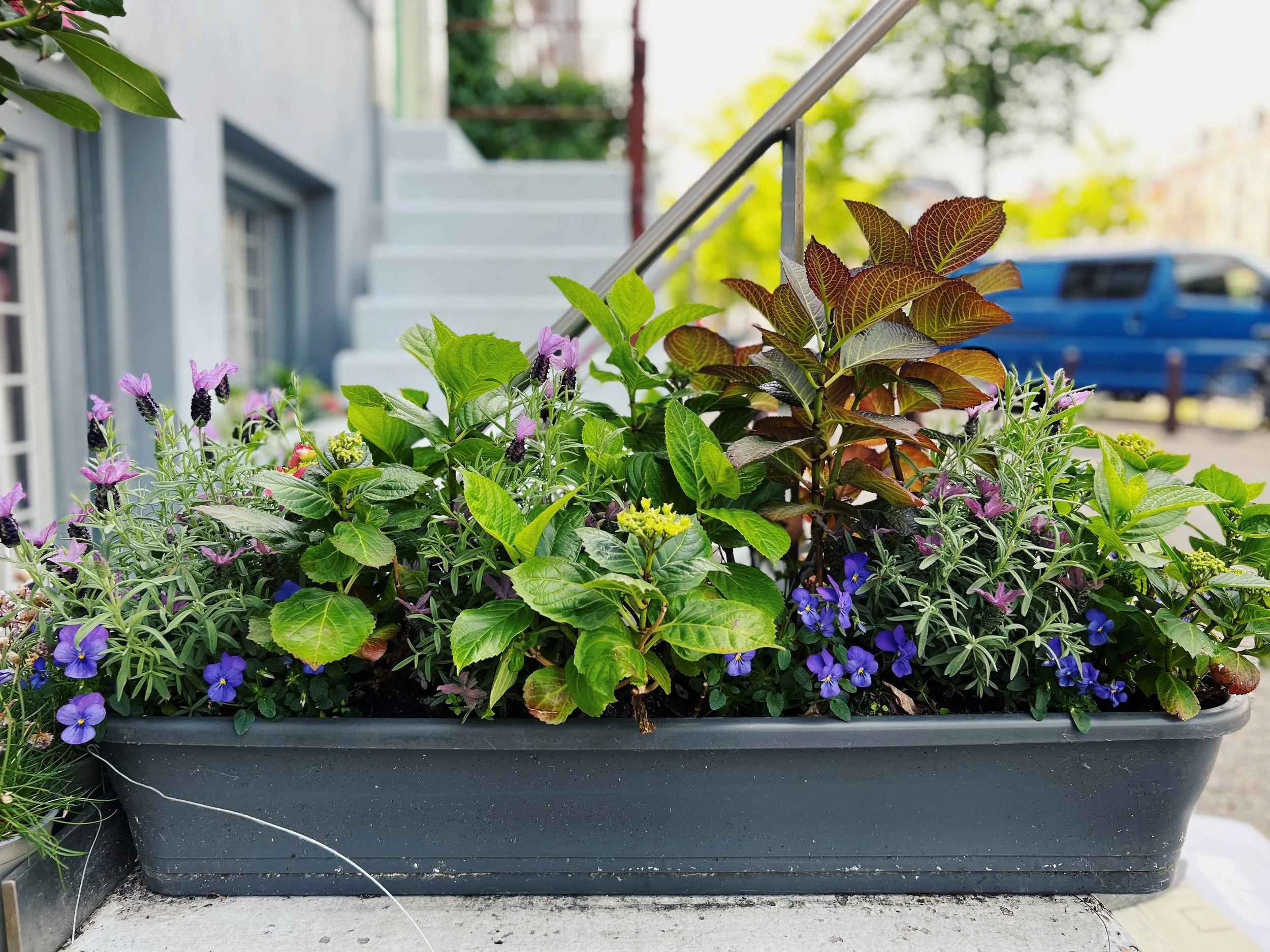
Finding my ‘why’
Michaela
I first tried the gym in 2019 through a short program and was surprised that I ended up liking it. It was a mix of physical and mental health benefits.
I wanted to move more for my health, but also feel good emotionally. Social interaction was important too.
I didn’t want it to feel like a chore, as physical activity can be boring, so it had to be something I’d look forward to. I thought about what I actually enjoy and what I’d be willing to stick with long-term.
I knew I didn’t want anything too intense to start with, so I started with trying out some gym equipment at my physio centre, which helped ease me into it.

Making a plan
Michaela
My physio was really supportive in setting things up. We visited a few local leisure centres to check for accessibility. The one closest to me, just 10 minutes away, unfortunately didn’t support my needs.
I ended up choosing one 30 minutes away that had accessible rooms, equipment I could use easily, and a pool with a ramp and wheelchair access.
She also connected me with an allied health assistant.
I wanted to exercise with someone supportive and understanding, someone who knew how to work with people with disabilities and could adapt sessions if needed.
It was important that they didn’t push me too hard, but instead encouraged me at a pace that worked for me.

Settling in and building a routine
Michaela
It’s been a gradual process. At first, I felt unsure and nervous, but as time went on, my confidence grew.
Having the right support along the way made a big difference.
I’ve learned to pace myself and listen to my body.
I make sure to rest after sessions and allow myself to scale back or skip a session on tough days.
I’ve realised that staying consistent is more important than pushing too hard.
Michaela
I go every Monday and Friday, which helps build a routine and makes it a regular part of my week.
Going with the physio assistant helps keep me accountable, adapt exercises when needed, and regularly check in on how I’m feeling both physically and mentally.
I try not to schedule anything immediately afterward so I have time to rest. This structure works well for me it’s manageable and sustainable.
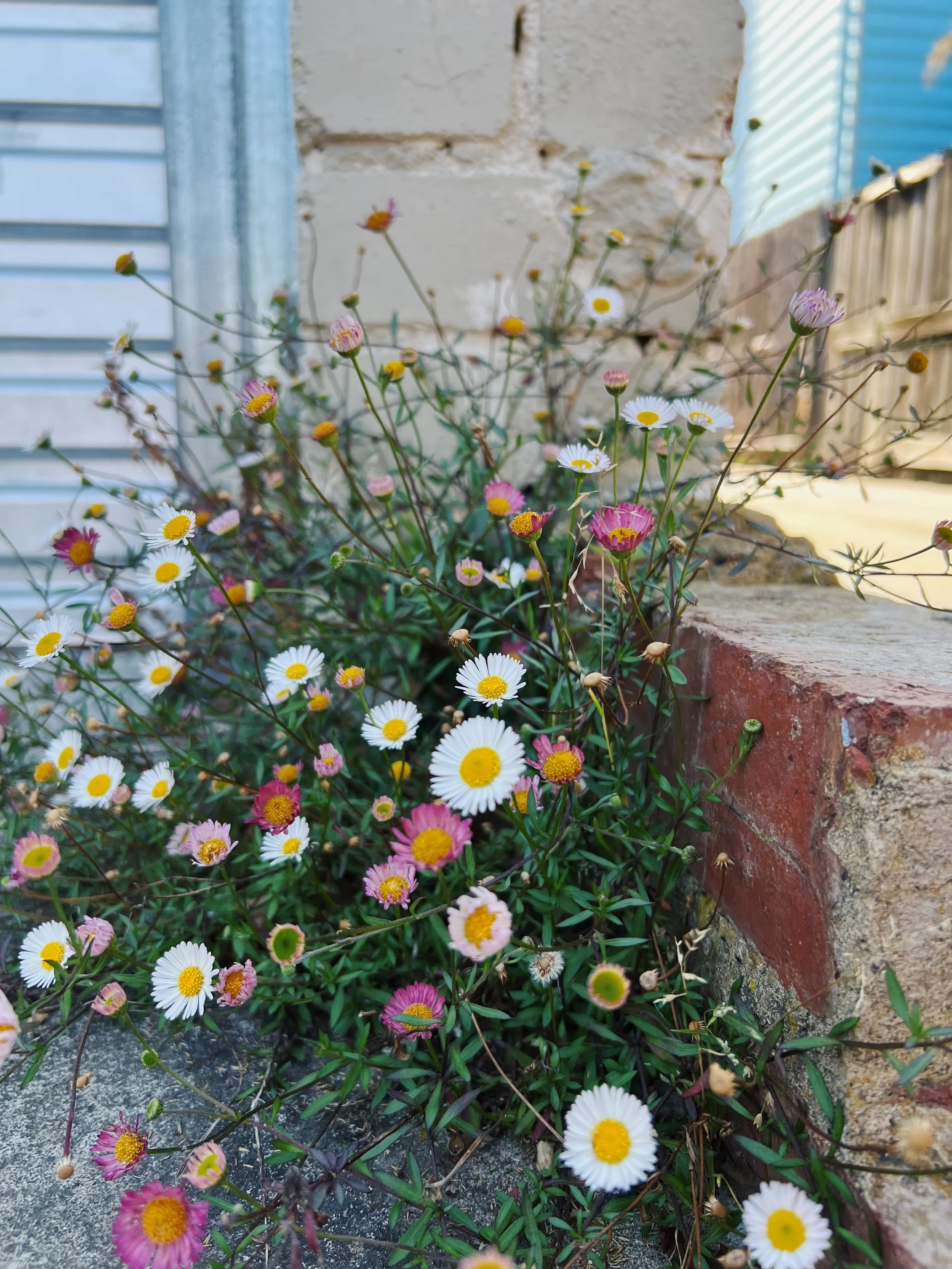
Final thoughts
Michaela
My confidence has grown.
I feel more in control of my body, more motivated to keep going, and less overwhelmed by trying new activities.
I’m more confident navigating venues and advocating for what I need in terms of support.

